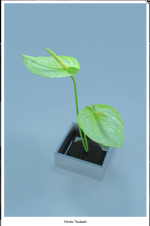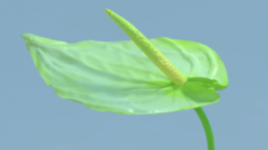To be honest, my first hunch on how this came into Cheetah is this method: Find a plant in some modeler depository and click download ...
If you would have provided a link to the gallery post, maybe we could tell for sure what happened there.
For the rest of your questions:
Sculpting:
Cheetah has a very rudimentary sculpting function with the brush tool, which isn't that useful imho (but it produces a displacement map, not a ton of polys. "Real" sculpting would produce polys). I don't know Maya's sculpting tools (it certainly is no zbrush), but I'd wager a bet that you'd be happy with sculptris (if it is still available somewhere and if it does run on a newer macos) or zbrush core mini (that can be found on pixologic's website. Somewhere), both for free (the latter being a bit more restrained, especially on the exporting side because it allows only to export a "decimated" obj-file (loss of detail there)). There's meanwhile a ton of more or less dedicated sculpting apps around, even for the ipad, and as much as I hate to point it out, blender is reported to have a very decent sculpting toolset (probably better than Maya, because the latter I've never even seen mentioned).
The problem with sculpting is this: You create a helluva lot of polygons in no time, like millions. So the usual way to work with it is: create a high poly sculpt (you can do that from a low poly mesh which makes things easier later on), create the low poly mesh if you don't have it, let an app create a displacement map from the difference (i. e. bake the displacement map). So you don't have millions of polys to handle in the 3d app; they only get created while rendering the thing. The problem is, this can't be done in Cheetah at the moment. So you could retopologize your sculpt (and loose some detail) or indeed use Blender where this is possible (or some paid app that allows this).
You don't even need a sculpting app to get the effect: Just paint a displacement app in the photo editor of your choice (or use a photo), because displacement is nothing else then a simple grayscale bitmap (ideally, though, in exr-format because of the details. Or you do use a blurred 8bit-format like jpeg). If the result isn't to your liking (i. e. you see the pixels in your object), just make it editable and then use a subdivision modifier (that way you can get away with a low resolution bitmap and still have a smooth result, which is in the end rather high in polycount (to make displacement work you need anyway a lot of polys).
Leaves:
If you have a lot of plants, a leave is often just a poly with a map for transparency, normal map and maybe displacement. For the plant you show above, if you want it really detailed, you could create the outer form as a mesh and then put on the bump map, if it's really near, even a displacement map from a real photo.
"Organic modeling":
Now you have to imagine a guy sitting before his computer, typing away, looking puzzled at the same time, stopping typing and slowly scratching his beard.
Sculpting isn't modeling. It's sculpting.
What usually is referred to as "organic modeling" is simple subdivision modeling which is the same in Cheetah as in Maya, not much to learn there except finding ways to get the same result without some of the tools you may be accustomed to, all the bells and whistles that indeed can make your daily modeling life easier but can be seen as a way of cheating when you look at it from the simple "modeling knowledge standpoint". Cheetah's modeling toolset may be a bit basic but all what you really need is there and that's one of the reasons I do recommend it for beginners (you don't learn driving in a ferrari, for example). But if you know subd-modeling you should be able to use Cheetah's tools right from the start.
If you don't, then I'd recommend the tutorial section in this forum. When you're familiar with the tools you can work through some maya tutorials on youtube, because you know that already, and it's easier to translate into Cheetah. There are a few "software agnostic" videos around, mostly about topology, where they use the most basic tools their software has to offer (if it's a good tutorial) and do concentrate on the kind of geometry you have to create to get stuff like pinching minimized.
In the end, every good "organic" model is a mix of subdivision modeling and maps (bump, normal or displacement, often all of them), where you try to keep the polycount as low as possible with as much detail as you need (normal maps can be produced in photoshop for example but also in apps like quixel mixer or substance painter / alchemist).
"Organic modeling" vs. "Hard edge modeling"
In the end there is not that much of a difference to it (you'd use less holding edges in the former). It's actually just a matter of experience to do what you need and you can learn a lot about "organic modeling" with a tutorial about a car or something similar as long as it is about subd-modeling (subdivision modeling. This modifier makes the difference).




